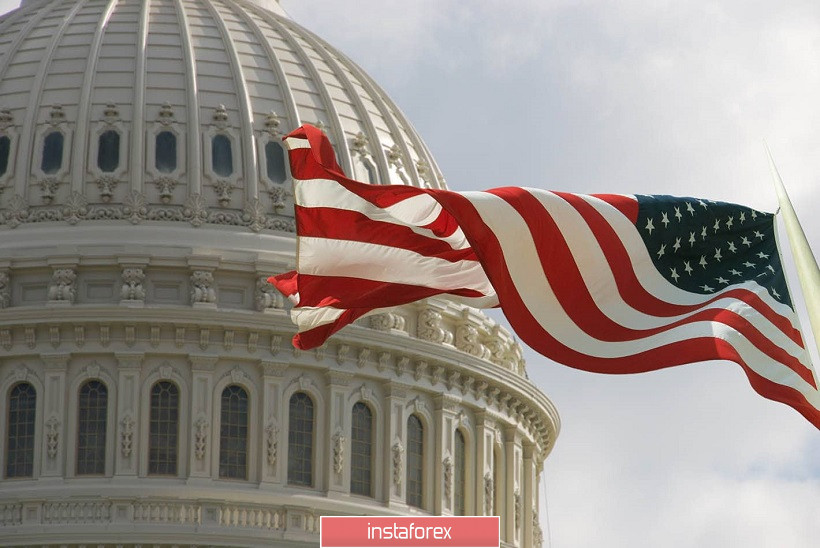The US currency is caught in the grip of conflicting fundamental factors. On the one hand, investors are concerned about the growing incidence of coronavirus in the United States and Europe. On the other hand, there are fading hopes for the adoption of a new stimulus package in the States before the November presidential election. And if the first factor provides background support for the greenback due to increased anti-risk sentiment, then recent events in the US are holding back the ambitions of dollar bulls.
Yesterday, another "deadline" expired in negotiations between representatives of the Democratic Party and the White house over the long-suffering bill on providing additional assistance to the American economy. The result of the talks was "a little predictable": the parties again failed to find a common denominator, saying that consultations were continuing. The Chairman of the Lower House of Congress, Democrat Nancy Pelosi, said that the new $ 2 trillion stimulus package agreed with the White House could be adopted as early as this week, but at the same time it is not known whether the Senate is ready to approve it. At the same time, she assured journalists that the Democrats are making concessions to their political opponents.

However, representatives of the Trump administration, as well as Republican senators, do not share Pelosi's optimism. Moreover, White House chief of staff Mike Meadows accused Democrats of constantly "changing the rules of the game". As for the Senate, the situation is even more complicated – the Upper House of Congress is controlled by Republicans, many of whom oppose additional stimulus measures. Especially in such huge, trillionth volumes. Let me remind you that not so long ago, the Senate rejected even the Republican bill, the volume of which was (in the final version) "only" 300 billion dollars. Given this disposition, it is not difficult to predict the fate of the $ 2-trillion bill – even if it is approved by the White House.
According to a number of American experts, representatives of the Democratic party are simply stalling, constantly moving deadlines, thereby prolonging the negotiation process. A week later, the presidential election will be held, according to the results of which one-party Democrat Joe Biden can lead the White House. In anticipation of such tectonic shifts, it is very short-sighted to make concessions to representatives of the Trump administration. Therefore, it is highly likely that the new package of incentives will not be adopted until November 3. At the moment, it is difficult to say in what format the negotiations will be resumed. Here it is worth recalling again the events of 20 years ago, when the counting of votes was delayed for many weeks – the results of the 2,000 elections were approved only in December, while the elections themselves traditionally ended on the first Tuesday in November. This year, this situation may be repeated if the Trump team appeals in court the results of the so-called "postal" vote.
In other words, the issue of agreeing on a new stimulus package may be delayed until next year, and this fact worries investors. The general pessimism about the prospects of the long-suffering bill was reflected in the stock market yesterday. Following the results of yesterday's trading, US stock indices fell sharply. In particular, the Dow Jones Industrial Average showed the strongest one-day drop since the beginning of September and for the first time since October 6, it ended trading below the 28,000 point mark. The Standard & Poor's 500 also showed similar dynamics, which collapsed by almost 2%, having experienced the maximum one-day drop in a month.
The US currency held back the blow, but could not continue its offensive in most pairs. In particular, the euro/dollar pair remained within the 18th figure, although the bears exerted pressure throughout the day yesterday. But sellers were only able to approach the lower limit of the flat range of 1.1800-1.1870 and did not even test the support level. In addition, data on the US real estate market was published last night, which disappointed traders. Thus, the volume of housing sales in the primary market in September decreased by 3.5%. This indicator is for the first time since April of this year (when the coronavirus crisis was at its peak) turned out to be in the negative area.
Today, currency pairs of the so-called "major group" are traded flat, reflecting the general phlegm of traders. The euro/dollar pair is no exception: the southern momentum has faded, while buyers are not able to develop corrective growth, against the background of a negative fundamental background (primarily due to the tightening of quarantine restrictions in the EU countries). The sluggish struggle continues in anticipation of the next information drivers.

In my opinion, under the current conditions, long positions can be considered, despite the "coronavirus factor". Sellers of EUR/USD at the moment came to the lower limit of the flat range, but could not overcome it. The southern impulse has faded, and to resume it, appropriate arguments are needed, which are not available at the moment. The pair quite gently pushed off from the lower border of the price corridor and gradually went up, towards the "ceiling" of the range. Therefore, at the moment, we can consider longs with the first goal of 1.1870 – this is the upper limit of the Kumo cloud, which coincides with the upper line of the Bollinger Bands indicator on the daily chart.





















